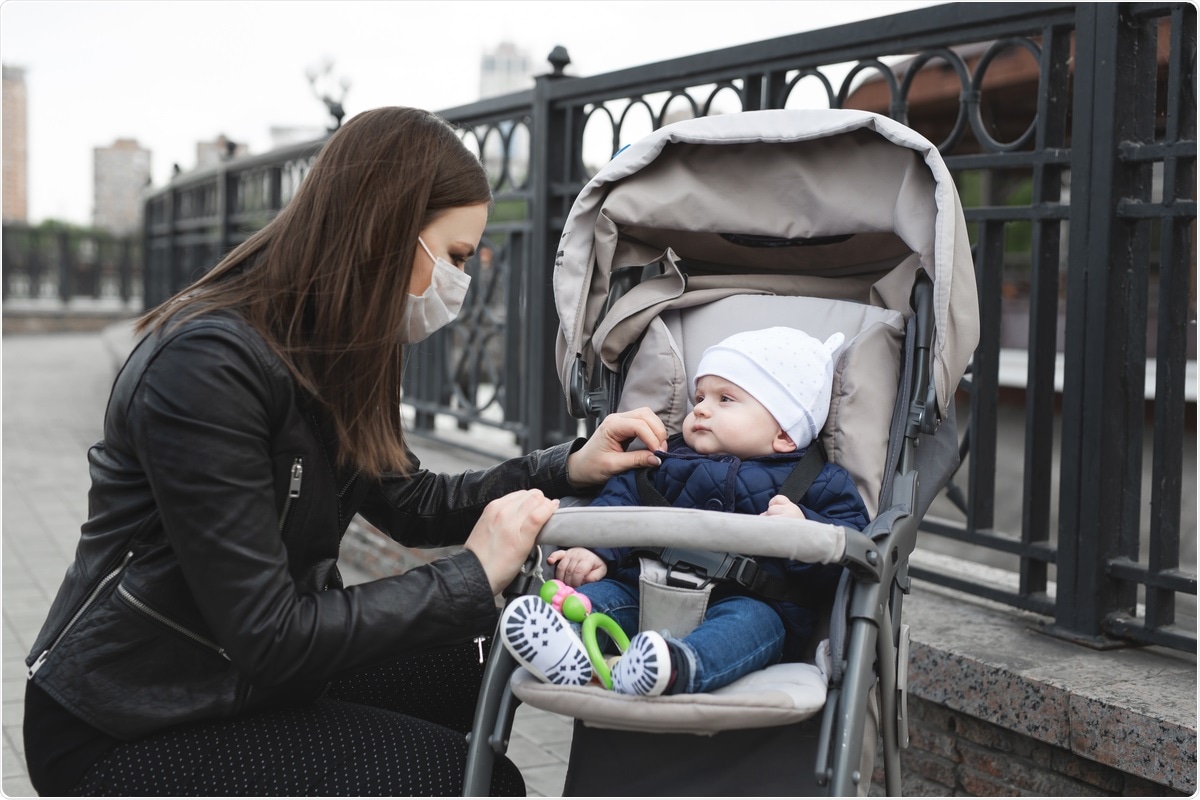Are infants at greater risk of COVID-19 than children?
The widely circulating severe acute respiratory syndrome coronavirus 2 (SARS-CoV-2) has caused the devastating pandemic of coronavirus disease 2019 (COVID-19). The impact of this infection varies significantly with age, sparing young children for the most part, though not completely.
However, a new study, released as a preprint on the medRxiv* server, suggests that infants may not be as resistant to the virus as children are. The researchers trace this to the expression of angiotensin-converting enzyme 2 (ACE2) to varying extents in different groups.

ACE2 is the host cell receptor that mediates attachment to the virus and its subsequent entry into the host cell to produce new viral particles. The link between the presence of this receptor and susceptibility to the virus has escaped the exact definition so far.
What is known about ACE2 expression?
ACE2 expression is high in airway epithelium, inducing many respiratory symptoms such as cough, nasal stuffiness, breathing difficulty, and in severe disease, acute respiratory distress syndrome (ARDS), leading to multi-organ failure and death in a sizable minority of patients.
Though males are notoriously more vulnerable to severe COVID-19 despite equivalent infection rates in both sexes, ACE2 levels are not indubitably higher in males. In the earlier SARS-CoV outbreak, too, males were more likely to be seriously ill, but their ACE2 levels were actually found to be lower in studies carried out in Hong Kong, Singapore and Taiwan.
Secondly, ACE2 appears to protect type 2 lung cells against infection, even as it acts as a receptor for the virus. This protective role is traced to its function in the renin-angiotensin axis, where it converts the vasoconstrictor angiotensin II to the vasodilatory compounds angiotensin(1-7) through hydrolysis.
The latter group of compounds protects the lung against inflammation and fibrotic changes. With lower levels of ACE2, the levels of angiotensin II are raised, which is known to induce pro-inflammatory cytokines like interleukin (IL)-6. This is widely considered a key mediator of the cytokine storm, which underlies the increased mortality in severe and critical COVID-19.
Thus, the role of ACE2 expression is complex. This has raised the issue of whether lymphocyte counts modulate susceptibility. Lymphocytes are immune cells, and their counts are relatively low with age. This may possibly play a role in protecting children against symptomatic COVID-19 in children.
Study details
The current study was aimed at understanding if the special immune status of neonates protected them from SARS-CoV-2 infection.
The researchers used data on 1.7 million polymerase chain reaction (PCR) tests used to detect the presence of viral genetic material and thus considered the gold standard for identification of infection. The PCR data was gathered from government sites and used to estimate the chances of infection in different age groups, the two sexes and with the presence of specific chronic illnesses.
The results show that the test positivity rate was 38% and that, as expected, the elderly were most likely to be positive. Younger patients below 60 were less likely to become infected.
However, this reduced risk was not uniformly distributed among all age groups. The relationship is more U-shaped, with both infants and older adolescents being more susceptible to infection than young children. Thus, age-related changes in ACE2, immune cell distribution, etc., are not enough to explain the lower risk in children.
This phenomenon has previously been reported, with those below 5 years showing a higher risk of infection compared to those between 6 and 10 years.
The researchers examined other laboratory parameters such as the lymphocyte count and the presence of cross-reactive antibodies raised against seasonal endemic human coronaviruses, which are protective against SARS-CoV-2 to some extent.
Since lymphocyte counts are highest in infants, they should, logically, be at the least risk for COVID-19, which belies the U-shaped curve observed. Again, antibodies to endemic human coronaviruses show an inverted U shape, which should be reflected in susceptibility to SARS-CoV-2 as well, instead of the observed U-shaped curve.
Plasma ACE is linked to ACE2 activity in health, and since ACE levels have a U-shaped relationship with age. The highest ACE levels are in children below 2 years, compared to those aged 2-4 years.
The researchers claim that this would indicate a U-shaped curve for ACE2 plotted against age, but this requires experimental confirmation. Further research is also required to understand how ACE2 expression is related to varying susceptibility levels with age.
*Important Notice
medRxiv publishes preliminary scientific reports that are not peer-reviewed and, therefore, should not be regarded as conclusive, guide clinical practice/health-related behavior, or treated as established information.
- Leung, C. et al. (2021). Infants are more susceptible to COVID-19 than children. medRxiv preprint. doi: https://doi.org/10.1101/2021.05.02.21256474, https://www.medrxiv.org/content/10.1101/2021.05.02.21256474v1
Posted in: Medical Science News | Medical Research News | Disease/Infection News | Healthcare News
Tags: ACE2, Acute Respiratory Distress Syndrome, Adolescents, Angiotensin, Angiotensin-Converting Enzyme 2, Antibodies, Breathing, Cell, Children, Chronic, Coronavirus, Coronavirus Disease COVID-19, Cough, Cytokine, Cytokines, Enzyme, Genetic, Inflammation, Laboratory, Lymphocyte, Mortality, Pandemic, Polymerase, Polymerase Chain Reaction, Receptor, Renin, Research, Respiratory, SARS, SARS-CoV-2, Severe Acute Respiratory, Severe Acute Respiratory Syndrome, Syndrome, Virus

Written by
Dr. Liji Thomas
Dr. Liji Thomas is an OB-GYN, who graduated from the Government Medical College, University of Calicut, Kerala, in 2001. Liji practiced as a full-time consultant in obstetrics/gynecology in a private hospital for a few years following her graduation. She has counseled hundreds of patients facing issues from pregnancy-related problems and infertility, and has been in charge of over 2,000 deliveries, striving always to achieve a normal delivery rather than operative.
Source: Read Full Article



